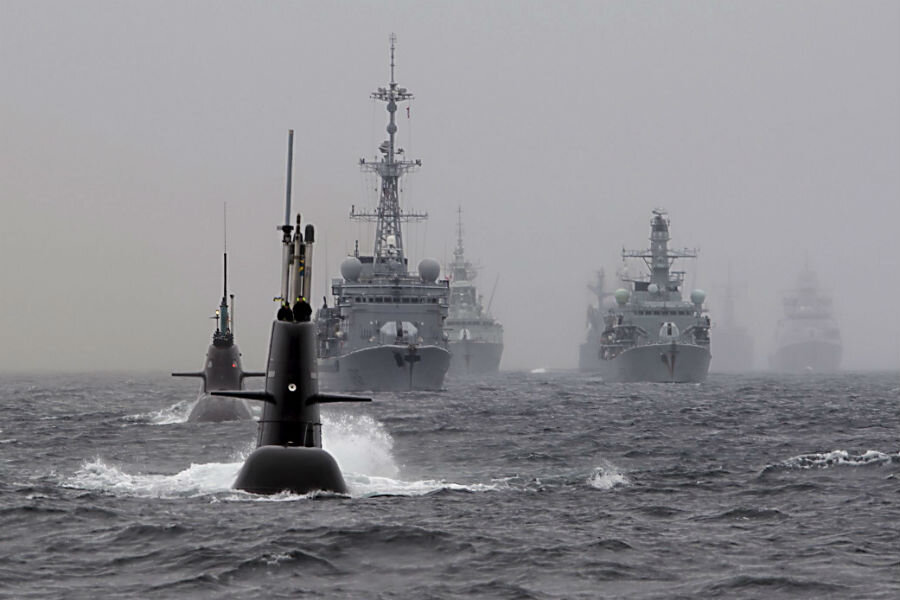Submarine wreck: Sweden identifies Russian sub in its waters
Loading...
| Stockholm, Sweden
A submarine wreck discovered off the eastern coast of Sweden probably dates from World War I rather than last year when the military hunted for a suspected Russian submersible, the Swedish armed forces said on Tuesday.
Monday's announcement by shipwreck hunters made headlines in Sweden, coming less than a year after its navy searched for a suspected Russian submarine sighted near Stockholm in what as the country's biggest military mobilization since the Cold War.
The military said in a statement that the find was likely a Russian submarine that sank in 1916. It had collided with a Swedish ship in poor visibility, killing all 18 crew members, local media said.
The shipwreck hunters' company, Ocean X Team, had sent underwater footage of the wreck to the Swedish military. Cyrillic letters on the hull indicated it was Russian, according to Ocean X Team.
"I am 99.9 percent sure it's from 1916, but the next step is to go down again and confirm it," Dennis Asberg, a partner in Ocean X Team told Reuters.
One of the men who discovered the submarine, Dennis Asberg, told the Expressen newspaper it looked modern. But one expert quoted by the paper said he believed it was a Russian submarine that sank in 1916.
The discovery of the Russian sub comes at a time when concerns about possible incursions by Russian submarines have increased as relations between Moscow and the West have worsened due to events in Ukraine.
Sweden has already said it will increase spending on its military, including up to 70 new fighter jets and new submarines, as it looks to reverse decades of underspending on its armed forces.
The Nordic country has also drawn closer to NATO in the past few years although the current government has ruled out seeking membership of the US-led alliance.
During the Cold War, the navy repeatedly chased suspected Soviet submarines along its coast with depth charges.
In 1981, in an incident known as "Whiskey on the Rocks," a Soviet nuclear Whiskey-class submarine was stranded near a naval base deep inside Swedish waters after it ran aground, causing a diplomatic standoff.
There have been many false alarms. In 1995, then-Prime Minister Ingvar Carlsson said the military on several occasions thought it had detected submarines only to find many of the underwater sounds were made by minks.
In April, the Finnish military used handheld underwater depth charges as a warning against what it suspected was a submarine in waters off Helsinki. (Reporting by Sven Nordenstam; Editing by Alistair Scrutton and Robin Pomeroy and Mark Heinrich))







